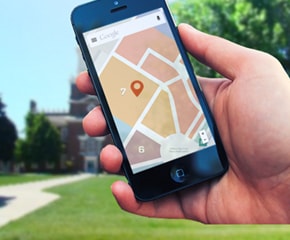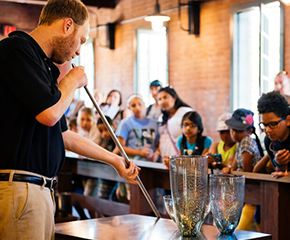"Brewster" Chair, 1969
Add to SetSummary
In 1970, the Henry Ford Museum purchased what was believed to be a rare and remarkable 17th century armchair. In 1977, a story broke about a woodworker who attempted to demonstrate his skill by making a similar chair that would fool the experts. Analysis proved the Museum's chair was the woodworker's modern fake. Today, the Museum views the chair as an educational tool. Does it fool you? …
In 1970, the Henry Ford Museum purchased what was believed to be a rare and remarkable 17th century armchair. In 1977, a story broke about a woodworker who attempted to demonstrate his skill by making a similar chair that would fool the experts. Analysis proved the Museum's chair was the woodworker's modern fake. Today, the Museum views the chair as an educational tool. Does it fool you?
In 1970, the Henry Ford Museum purchased a remarkable 17th century armchair from an antiques dealer who stumbled upon it sitting in the parlor of a house in Maine. It was a massive, throne-like chair made up of spindles, a type long associated with one of the founders of the Massachusetts Bay Colony, William Brewster.
Early chairs were often made by men called turners who produced the chair parts by turning them on a lathe. Sockets were drilled in the resulting spindles that were then assembled like a Tinker Toy. The resulting construction often was not meant to provide a place of comfort but rather it was intended to impress the viewer and confirm the sitter's status and position. The king sat on a throne; Elder Brewster sat in his great, turned chair.
Because of its rarity, this "Brewster" chair was highly prized by the museum; it was even featured on the cover of a publication describing the early furniture in the Museum's collection. The authenticity of the chair, however, was called into question in 1977 when The Providence Journal published a story about a wood worker who attempted to demonstrate his skill and knowledge by making a chair that would fool the experts. The article described in great detail how the chair was aged and how a fake provenance was imagined to provide a rationale for every one of the dings and nicks that represented centuries of wear. Unfortunately, the chair was the very one that Henry Ford Museum had purchased seven years before!
The story was picked up by several antiques publications. From these the story spread to The New York Times and then to hundreds of local newspapers. An extensive analysis of the chair proved that it was indeed a modern fake. For example, x-rays showed that the drill bits used for making the holes that received the turned spindles were "modern" having a pointed end rather than having the spoon shape of early bits. With great embarrassment, the museum finally admitted that the maker had fooled the experts.
The Henry Ford Museum keeps the chair as an educational tool. It has been loaned to several national exhibitions about fakes and forgeries.
Artifact
Armchair
Date Made
1969
Place of Creation
Location
Not on exhibit to the public.
Object ID
70.65.1
Credit
From the Collections of The Henry Ford.
Material
Oak
Dimensions
Height: 46.25 in
Width: 24.875 in
Length: 18.5 in





